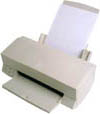Parallel Structure
Recognize parallel structure when you find it.
Whenever you include a list of actions or items, you must use equal grammatical units. If the first item is a noun, then the following items must also be nouns; if the first action is a simple past tense verb, then make the other items simple past tense verbs too.
Nonparallel structure is lopsided like this:
Students
,
, and
.
Students capped their pens, were closing their notebooks, and zipped their book bags as they tried to alert Professor Jones, rambling at the lectern, that the end of class had arrived.
Capped and zipped are both simple past tense verbs, but were closing is past progressive, wrecking the parallelism.
Parallel structure, the correct way to write, has this format:
Students
,
, and
.
Students
,
, and
.
To establish parallelism, you can use all simple past tense verbs:
Students capped their pens, closed their notebooks, and zipped their book bags as they tried to alert Professor Jones, rambling at the lectern, that the end of class had arrived.
Or you can revise the sentence so that all the items in the list are nouns:
Students gathered their pens, notebooks, and book bags as they tried to alert Professor Jones, rambling at the lectern, that the end of class had arrived.
Be especially careful with correlative conjunctions.
Not only ... but also, either ... or, and neither ... nor all require special attention when you are proofreading for parallelism. These correlative conjunctions require equal grammatical units after both parts of the conjunction.
For instance, you can have two main clauses like this:
Not only did Professor Jones give the students a withering look, but he also assigned 20 extra pages of homework as punishment for their impatience to leave.
Or you can use two verbs:
Professor Jones not only gave the students a withering look but also assigned 20 extra pages of homework as punishment for their impatience to leave.
Or you can have two nouns:
Professor Jones gave the the students not only a withering look but also 20 extra pages of homework as punishment for their impatience to leave.
Whatever choice you make, just confirm that you have two equal grammatical units after both parts of the correlative conjunction.
©1997 - 2025 by Robin
L. Simmons
All Rights Reserved.
